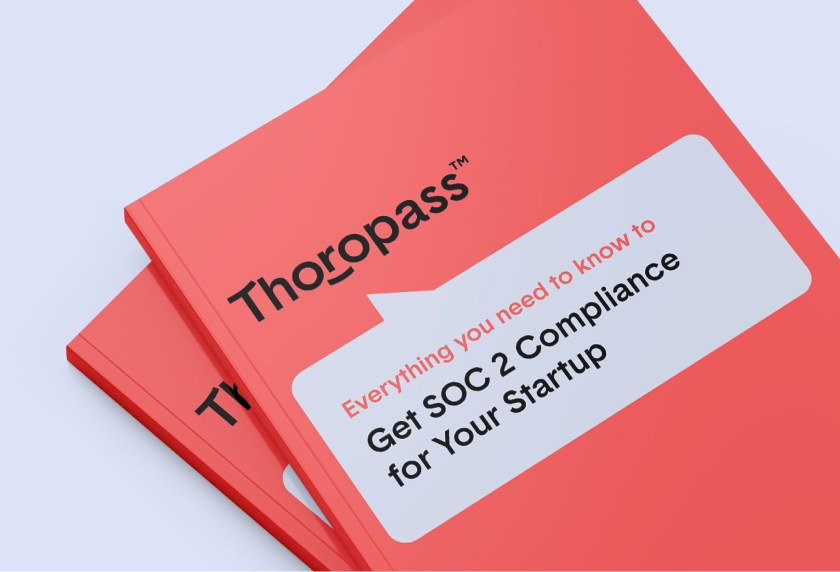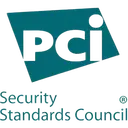At the heart of achieving SOC 2 compliance lies a critical first step: The SOC 2 gap analysis. This comprehensive assessment identifies the differences between your current security controls and the SOC 2 requirements, laying the foundation for successful compliance. Whether you’re pursuing SOC 2 for the first time or strengthening your existing security program, understanding how to properly conduct a gap analysis is crucial.
As Thoropass’s experts can attest, organizations that approach SOC 2 with a strategic gap analysis experience a more efficient compliance journey, face fewer audit challenges, and develop stronger security practices overall.
This guide will walk you through everything you need to know about SOC 2 gap analysis—from understanding its purpose and methodology to implementing an effective remediation plan tailored to your organization’s specific needs. We’ll draw on our experience guiding thousands of organizations through successful SOC 2 audits to provide actionable insights that transform this process from intimidating to manageable.
Key takeaways
- A SOC 2 gap analysis identifies critical security control deficiencies before they become audit findings, transforming compliance from a reactive checkbox exercise into a strategic advantage.
- The most effective gap assessments evaluate four dimensions: what data you process, where it resides, how it flows through systems, and who has access to it.
- Thoropass’s hybrid approach combines automated scanning with expert guidance, eliminating compliance friction points while ensuring controls satisfy both technical requirements and auditor expectations.
What is a SOC 2 gap analysis (or gap assessment)?
A SOC 2 gap analysis (sometimes called gap assessment) is the systematic process of identifying differences between your organization’s current security and compliance processes and the requirements set forth by the SOC 2 compliance framework. This critical evaluation serves as the foundation for your compliance journey by revealing exactly where your security posture needs strengthening.
Unlike a full SOC 2 audit, which results in an official attestation report, a gap analysis is a preliminary assessment designed to prepare your organization for a successful audit. Think of it as a comprehensive diagnostic that identifies compliance gaps before they become issues during a formal examination.
At its core, a SOC 2 gap assessment has three primary objectives:
- To evaluate your existing information security program against the SOC 2 Trust Services Criteria as part of a comprehensive readiness assessment
- To identify specific areas where your compliance activities fall short of SOC 2 compliance requirements
- To establish a clear, prioritized roadmap for remediation efforts
The SOC 2 framework is built around five Trust Services Criteria:
- Security (the Common Criteria)
- Availability
- Processing Integrity
- Confidentiality
- Privacy
While Security is mandatory for all SOC 2 reports, organizations can choose which additional criteria to include based on the commitments made to an end user and the specific mechanisms in place to meet those commitments.
A thorough gap analysis examines your organization across four critical dimensions:
- What data you process: Classifying information based on sensitivity and regulatory requirements
- Where this data resides: Mapping your technology assets and infrastructure
- How data flows through your systems: Documenting data movement with network architecture diagrams
- Who has access to this data: Defining roles, responsibilities, and access controls
The outcome of this assessment is not merely a list of compliance deficiencies but a strategic understanding of your security posture that enables targeted improvements. With a well-executed gap assessment, your organization can approach SOC 2 compliance with confidence, knowing exactly what needs to be addressed before an auditor evaluates your controls.
Why the SOC 2 gap assessment is so important
A SOC 2 gap analysis is far more than a preliminary compliance exercise—it’s a strategic investment that delivers significant business value across multiple dimensions. Understanding why this process matters helps organizations approach it with the right mindset and resources.
- Strategic business benefits: A gap analysis provides a comprehensive view of your security posture, enabling proactive identification of vulnerabilities. Organizations that conduct thorough assessments build confidence and avoid the costly consequences of failed compliance, including lost deals and extended sales cycles.
- Resource optimization: By mapping exactly where you stand relative to SOC 2 requirements, you can create a targeted remediation plan that efficiently allocates resources. This ensures implementation of stage-appropriate controls aligned with your organization’s maturity, growth plans, and available resources.
- Risk mitigation: Beyond compliance, gap analysis strengthens your overall security posture by identifying and addressing vulnerabilities before they can be exploited. This proactive approach protects sensitive data from potential breaches and cyber-attacks that could damage your reputation and business.
- Audit preparedness: Identifying and addressing compliance gaps beforehand significantly improves your chances of a successful SOC 2 audit. You avoid the costly and time-consuming process of remediating findings during or after an official audit.
- Articulating your compliance narrative: A SOC 2 audit fundamentally tells the story of your information security approach. A well-executed gap analysis helps you shape and strengthen this narrative before presenting it to auditors, demonstrating a mature approach to security governance.
From an auditor’s perspective, organizations that conduct thorough gap analyses demonstrate a level of security maturity that stands out immediately. When a client has clearly mapped their controls to the Trust Services Criteria and addressed gaps methodically, it transforms the audit from a stressful examination into an evaluation of well-implemented security practices. This preparation not only streamlines the audit process but often results in more favorable outcomes since remediation happens proactively rather than reactively.”
Leith Khanafseh
Audit Managing Partner
Thoropass
In essence, a SOC 2 gap analysis transforms compliance from a reactive checkbox exercise into a strategic initiative that enhances your security posture, optimizes resource allocation, mitigates risks, and prepares you for a successful audit. The investment in this process pays dividends across the entire organization, from security and operations to sales and business development.
Step-by-step process for conducting a SOC 2 gap assessment
Conducting a thorough SOC 2 gap analysis requires a methodical approach to evaluate your current security posture against compliance requirements. Follow these key steps to ensure your assessment identifies all relevant gaps in your controls environment.
1. Initial data classification
Start by understanding what types of data your organization stores and processes. This data processing inventory helps determine which information requires different levels of protection, and proper classification helps you apply appropriate controls.
- Identify and categorize data based on sensitivity (e.g., confidential, internal, public)
- Document where regulated information (PII, financial data, intellectual property) resides
- Determine which data falls under SOC 2 scope and which Trust Services Criteria apply
- Establish clear ownership for each data classification category
2. Asset inventory development
A comprehensive asset inventory documents where your data lives and provides the foundation for identifying control gaps.
- Catalog all infrastructure components, including cloud services, applications, and databases
- Document employee devices that access or store company information
- Include both physical and virtual assets within your technology stack
- Record version information, ownership, and current security configurations
3. Roles and responsibilities documentation
While the “what” and “where” of information security are important for SOC 2, so is the “who.” Auditors will want to know that different types of employees are allowed access to select data categories, and each data category has an owner.
You should be able to answer the following questions:
- What types of data can each employee access?
- How do they have access?
- What do they use it for?
Structure personnel qualifications on an individual basis or based on teams and responsibility levels; for example, your COO should have access to more information than an associate. This granular documentation of roles ensures proper access control implementation and demonstrates the principle of least privilege to auditors.
4. Network architecture and data flow mapping
Understanding how data moves through your organization reveals potential security vulnerabilities and control gaps.
- Create visual diagrams showing data movement between systems and external entities
- Document integration points with third-party services and vendor systems
- Identify where encryption, network monitoring tools, and access controls are required
- Map user authentication pathways and permission structures
5. Control evaluation and gap identification
Compare your existing controls against SOC 2 requirements to identify gaps in your security posture.
- Assess policies, procedures, and technical controls against each applicable TSC
- Document existing controls and their current implementation status
- Identify missing controls and areas where existing controls need strengthening
- Evaluate the maturity of current controls and their effectiveness
6. Risk assessment and prioritization
Not all gaps represent equal risk to your organization. Evaluate the potential impact of identified gaps to prioritize remediation efforts.
- Assess the risk level associated with each identified gap
- Consider factors like potential impact, likelihood, and available mitigations
- Prioritize gaps based on risk level and remediation complexity
- Document risk acceptance decisions for gaps that won’t be immediately addressed
7. Remediation planning
Develop a clear roadmap for addressing identified gaps based on your prioritization.
- Create specific, actionable tasks for implementing missing controls
- Assign responsibility and deadlines for each remediation item
- Determine resource requirements for successful implementation
- Establish metrics to measure remediation progress and effectiveness
8. Documentation and evidence collection
Proper documentation is essential for both remediation and audit preparation.
- Document all policies, procedures, and control implementations
- Collect evidence demonstrating control effectiveness
- Organize documentation to align with SOC 2 criteria and control objectives
- Establish processes for ongoing evidence collection and maintenance
9. Continuous monitoring and reassessment
A SOC 2 gap analysis is not a one-time exercise but part of an ongoing program to maintain compliance.
- Implement processes to continuously monitor control effectiveness
- Conduct periodic reassessments to identify new gaps
- Update your remediation plan as your organization and technology evolve
- Prepare for ongoing compliance maintenance after successful audit completion
Following these steps creates a structured approach to identifying and addressing SOC 2 compliance gaps. The process not only prepares your organization for a successful audit but also establishes a foundation for maintaining robust security practices aligned with SOC 2 requirements.
Who should perform your SOC 2 gap analysis?
When it comes to conducting a SOC 2 gap analysis, organizations have several options. The right choice depends on your resources, timeline, internal expertise, and compliance objectives. Each approach offers distinct advantages and potential limitations worth considering.
Automated compliance scanning tools
Automated scanning tools quickly assess your systems, policies, and procedures against SOC 2 control requirements by analyzing configurations, settings, and technical aspects.
- Advantages: Provides rapid initial insights, consistently applies evaluation criteria, and can continuously monitor your environment for compliance drift.
- Limitations: May not capture the full nuances of your operations, might generate false positives or negatives, and typically requires expert interpretation of results.
Third-party auditors and consultants
Independent third-party auditors or consultants with specialized SOC 2 expertise can conduct comprehensive assessments through interviews, documentation reviews, and observations.
- Advantages: Brings authoritative expertise and fresh perspective, provides actionable recommendations prioritized by risk, and offers guidance during remediation.
- Limitations: Typically more costly than automated approaches, requires scheduling and coordination, and may not build internal compliance capacity.
Internal compliance teams
Your organization’s security, IT, or compliance professionals can conduct the assessment using their knowledge of your systems and business operations.
- Advantages: Leverages existing knowledge of your environment, builds internal compliance expertise, and supports long-term ownership of your security program.
- Limitations: May lack specialized SOC 2 expertise, could be influenced by internal biases or blind spots, and often requires reallocation of key personnel from other priorities.
Hybrid approaches, like Thoropass
Many organizations find the most effective approach combines automated scanning with expert oversight, which is precisely what Thoropass offers with its integrated platform and compliance expertise.
- Advantages: Combines efficiency of automation with human expertise for context-aware compliance, builds internal capabilities through collaborative workflows, and provides both technical assessment and strategic guidance. Thoropass’s approach eliminates the typical friction points in compliance management by combining purpose-built technology with experienced compliance professionals who understand real-world implementation challenges.
- Strategic benefits: This hybrid approach creates a unified compliance ecosystem where technology handles repetitive tasks while experts focus on strategic interpretation and remediation guidance. Thoropass’s platform provides continuous monitoring with expert oversight, ensuring you’re always audit-ready without dedicating full-time internal resources to compliance efforts.
What makes our hybrid approach so effective is that we’ve built technology that mirrors how auditors actually think and evaluate controls. Our platform doesn’t just identify gaps—it helps you understand them in context, prioritize them based on risk, and provide guidance to implement solutions that satisfy auditors while strengthening security. We’ve essentially encoded our team’s decades of compliance expertise into technology that makes SOC 2 accessible to organizations at any stage of maturity.
Leith Khanafseh
Audit Managing Partner
Thoropass
Common SOC 2 compliance gaps
When conducting SOC 2 gap analyses, certain control deficiencies appear consistently across organizations. Identifying these common gaps can help you proactively address potential issues in your own environment.
- Incomplete or outdated policies and procedures: Many organizations lack formal documentation of security policies or have documents that haven’t been reviewed or updated in years
- Insufficient access controls: Excessive access privileges, inadequate user provisioning/deprovisioning processes, and missing multi-factor authentication are frequent findings
- Inadequate risk assessment processes: Organizations often lack formal, documented methodologies for identifying, assessing, and managing risks on a regular basis
- Inadequate third party risk management: Many companies struggle with proper assessment, ongoing monitoring, and documentation of vendor security practices
- Weak change management: Informal or inconsistent processes for testing, approving, and documenting changes to production systems frequently create compliance gaps
- Insufficient vulnerability management: Irregular scanning, incomplete remediation processes, and poor documentation of security patching often create significant gaps
- Inadequate logging and monitoring: Missing or incomplete system logs, lack of alert mechanisms, and insufficient review procedures commonly appear in gap assessments
- Incomplete business continuity planning: Missing or untested disaster recovery plans, backup procedures, and restoration testing are frequent compliance gaps
- Weak physical security controls: Organizations with on-premises infrastructure often have gaps in visitor management, access restrictions, and environmental controls
- Insufficient security awareness training: Inconsistent or inadequate employee security training and lack of documentation for training completion are common findings
Creating an effective remediation plan
Once you’ve identified gaps in your SOC 2 compliance, you need a structured approach to address them. An effective remediation plan translates findings into actionable tasks with clear ownership and timelines.
Prioritization strategies
Not all compliance gaps pose equal risk to your organization or require the same level of effort to address. Develop a prioritization framework that considers:
- Risk level: Categorize gaps based on their potential impact on security, operations, and compliance (high, medium, low)
- Remediation complexity: Assess the effort, resources, and time required to implement each control
- Dependencies: Identify which gaps must be addressed before others can be tackled effectively
- Business impact: Consider how remediation activities might affect operations and customer experience
Implementation approach
Once prioritized, develop a plan to implement remediation strategies for each gap:
- Define clear control objectives: Establish what successful implementation looks like for each control, particularly for data security requirements
- Document implementation steps: Break down complex remediation tasks into manageable actions
- Assign responsibility: Designate specific individuals accountable for implementing each control
- Establish realistic timelines: Set deadlines that balance urgency with resource availability
- Identify success metrics: Determine how you’ll measure whether implemented controls are effective
Stage-appropriate controls
A critical aspect of remediation planning is implementing controls that align with your organization’s size, maturity, and resources.
- For early-stage companies, focus on fundamental controls with manual processes that can scale
- For growing organizations, implement more robust automated controls that reduce reliance on individual team members
- For established enterprises, develop comprehensive control ecosystems with multiple layers of oversight
Continuous improvement framework
Your remediation plan should extend beyond addressing immediate gaps to establish a framework for ongoing compliance:
- Regular reassessment: Schedule periodic reviews to identify new or evolving gaps
- Control maturity roadmap: Develop a long-term vision for maturing your control environment
- Feedback loops: Create mechanisms to incorporate lessons learned into future control implementations
- Documentation updates: Maintain current policies and procedures that reflect implemented controls
How Thoropass streamlines SOC 2 gap analysis and more
Thoropass transforms the SOC 2 gap analysis and compliance journey from a burdensome overhead into a strategic advantage for your organization. Our unique approach combines powerful technology with human expertise to deliver a more efficient, effective compliance experience.
Technology-powered efficiency
Thoropass’s platform automates the most time-consuming aspects of gap analysis:
- Control Mapping
- Evidence Collection
- Policy Generation
- Vendor Management
Expert-guided implementation
Technology alone isn’t enough—Thoropass combines automation with expert guidance:
- Compliance architects
- Stage-appropriate advice
- Audit preparation
- Cross-framework efficiency
We designed Thoropass to solve the fundamental problem with compliance: The disconnect between what tools tell you to do and what actually satisfies auditors. Our platform bridges that gap by combining purpose-built technology with compliance expertise that understands the nuances of successful audits. This creates a streamlined experience that reduces audit cycles, eliminates frustrating back-and-forth, and builds a sustainable compliance program.
Leith Khanafseh
Audit Managing Partner
Thoropass
Beyond the gap analysis: Your compliance journey
A successful gap analysis is just the beginning of your compliance journey. Thoropass supports your organization through the entire compliance lifecycle:
- Continuous monitoring
- Audit readiness
- Multi-framework coverage
A well-executed SOC 2 gap analysis transforms compliance from an intimidating hurdle into a strategic advantage that strengthens your security posture while building customer trust. With the right approach and tools, you can turn the gap analysis process into a foundation for security maturity—one that not only satisfies auditors but creates genuine security resilience in an increasingly complex threat landscape.
The days of treating compliance as a painful checkbox exercise are over; forward-thinking organizations recognize that frameworks like SOC 2 provide a valuable blueprint for security practices that protect critical assets and enable business growth.If you’re confused about any of the steps above, reach out to our team of compliance experts! We’re always happy to help.
Frequently asked questions
What are the 5 criteria for SOC 2?
To conduct an effective SOC 2 gap analysis, you must understand the Trust Services Criteria (TSC) that form the foundation of the SOC 2 framework. These criteria establish the standards against which your organization’s controls will be evaluated during an audit.
- Security (Common Criteria): The foundational criterion required for all SOC 2 reports. It addresses how your organization protects systems and information against unauthorized access, both physical and logical. Your gap analysis must evaluate access controls, system monitoring capabilities, vulnerability management, and incident response procedures.
- Availability: Assesses whether your systems are operational and accessible as committed or agreed upon. Your gap analysis should examine business continuity planning, disaster recovery procedures, monitoring tools, and maintenance protocols.
- Processing Integrity: Focuses on whether systems achieve their purpose, delivering the right data at the right time. Your assessment needs to evaluate quality assurance processes, error handling, and monitoring to ensure complete, accurate, and timely processing.
- Confidentiality: Examines how your organization protects information designated as confidential. Your gap analysis should review data classification, encryption implementations, access restrictions, and retention/disposal practices.
- Privacy: Addresses personal information handling according to your privacy notice and the AICPA’s privacy principles. Your assessment must evaluate personal data collection, use, retention, disclosure, and disposal practices.
When conducting your gap analysis, remember that only the Security criterion is mandatory—you can select additional criteria based on your business operations and client requirements. Each chosen criterion will expand the scope of your gap analysis and subsequent audit, requiring evaluation of additional controls and practices.
What is gap analysis between two standards?
A gap analysis between two compliance standards is a systematic comparison that identifies differences in requirements, controls, and implementation approaches between frameworks. This assessment helps organizations leverage existing compliance work while efficiently addressing unique requirements of each standard.
When comparing two frameworks (such as SOC 2 and ISO 27001, or HIPAA and GDPR), a gap analysis typically:
- Maps overlapping controls that satisfy both standards
- Identifies unique requirements specific to each framework
- Highlights differences in implementation requirements, even for similar controls
- Assesses variations in evidence formats, testing approaches, and documentation needs
For organizations managing multiple compliance frameworks, a comprehensive gap analysis provides significant strategic advantages:
- Reduced duplication: Implement a single control that satisfies requirements across multiple frameworks
- Resource optimization: Focus efforts on addressing unique requirements rather than rebuilding common controls
- Strategic planning: Create a unified compliance roadmap that efficiently addresses multiple frameworks
- Evidence reusability: Collect evidence once to satisfy overlapping requirements across standards
Continued Learning
Take the next step toward SOC 2 compliance
Our guide walks you through everything your business needs to know as you navigate the journey toward SOC 2 compliance

Related Posts
Stay connected
Subscribe to receive new blog articles and updates from Thoropass in your inbox.
Want to join our team?
Help Thoropass ensure that compliance never gets in the way of innovation.














.png)